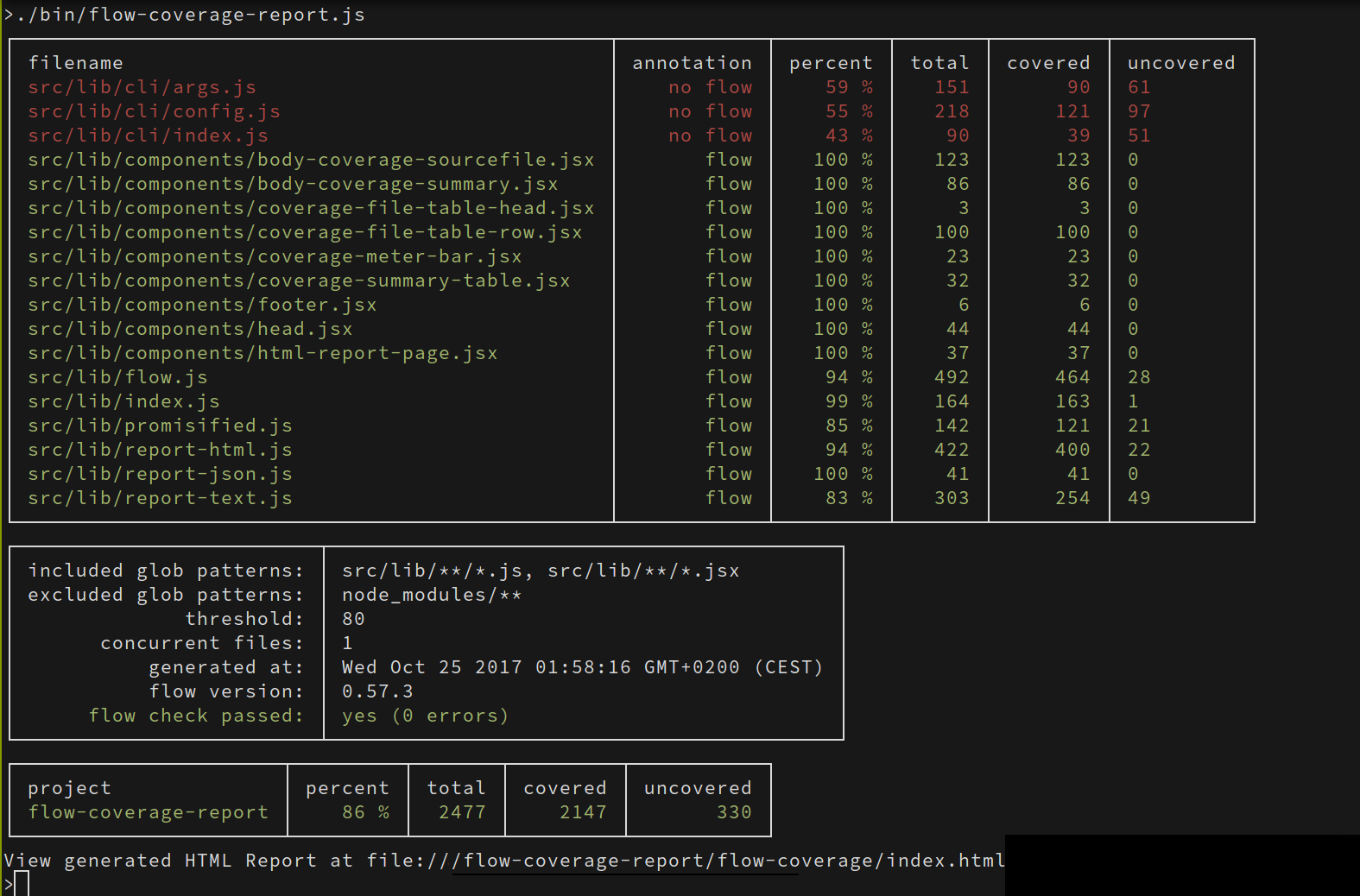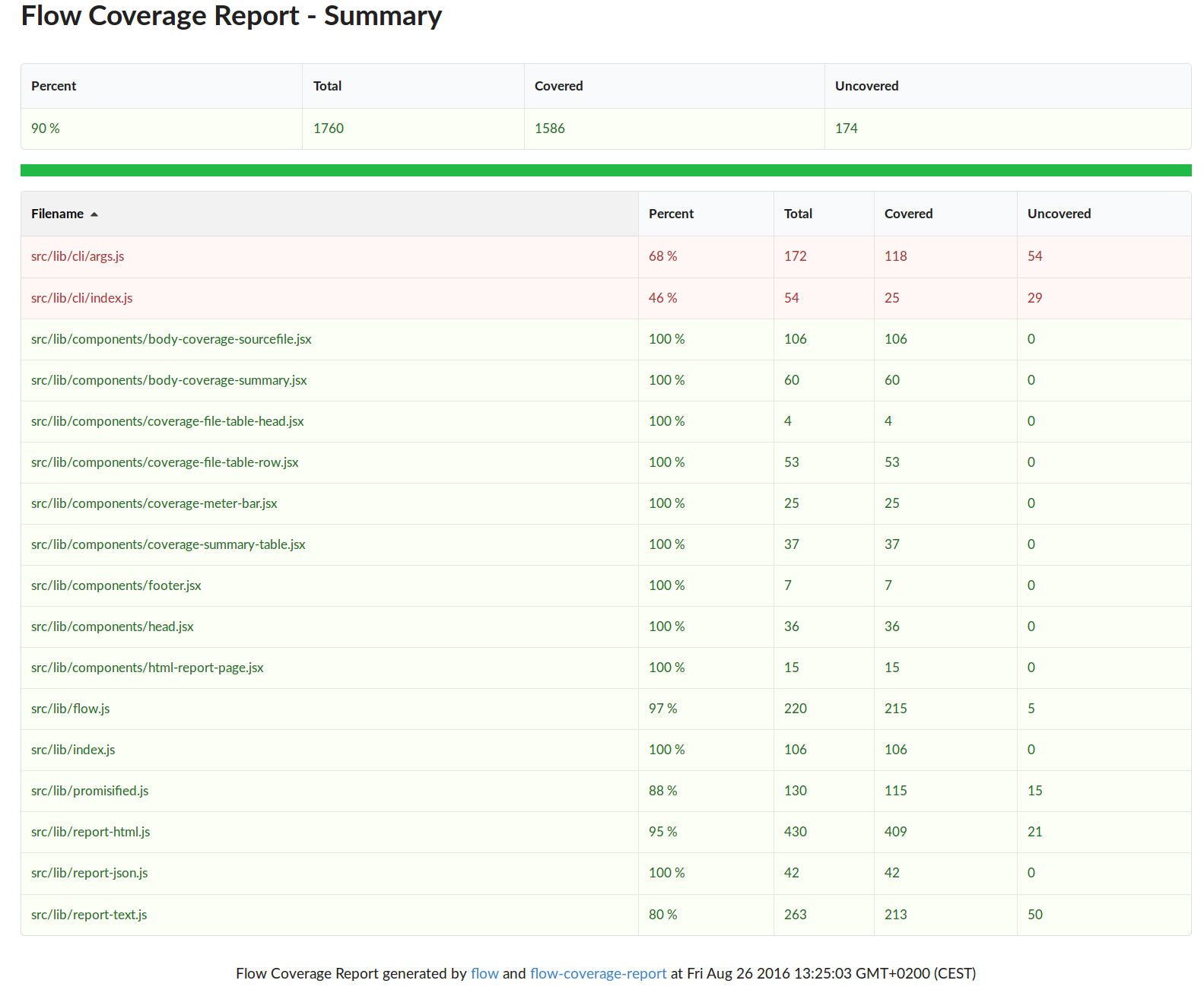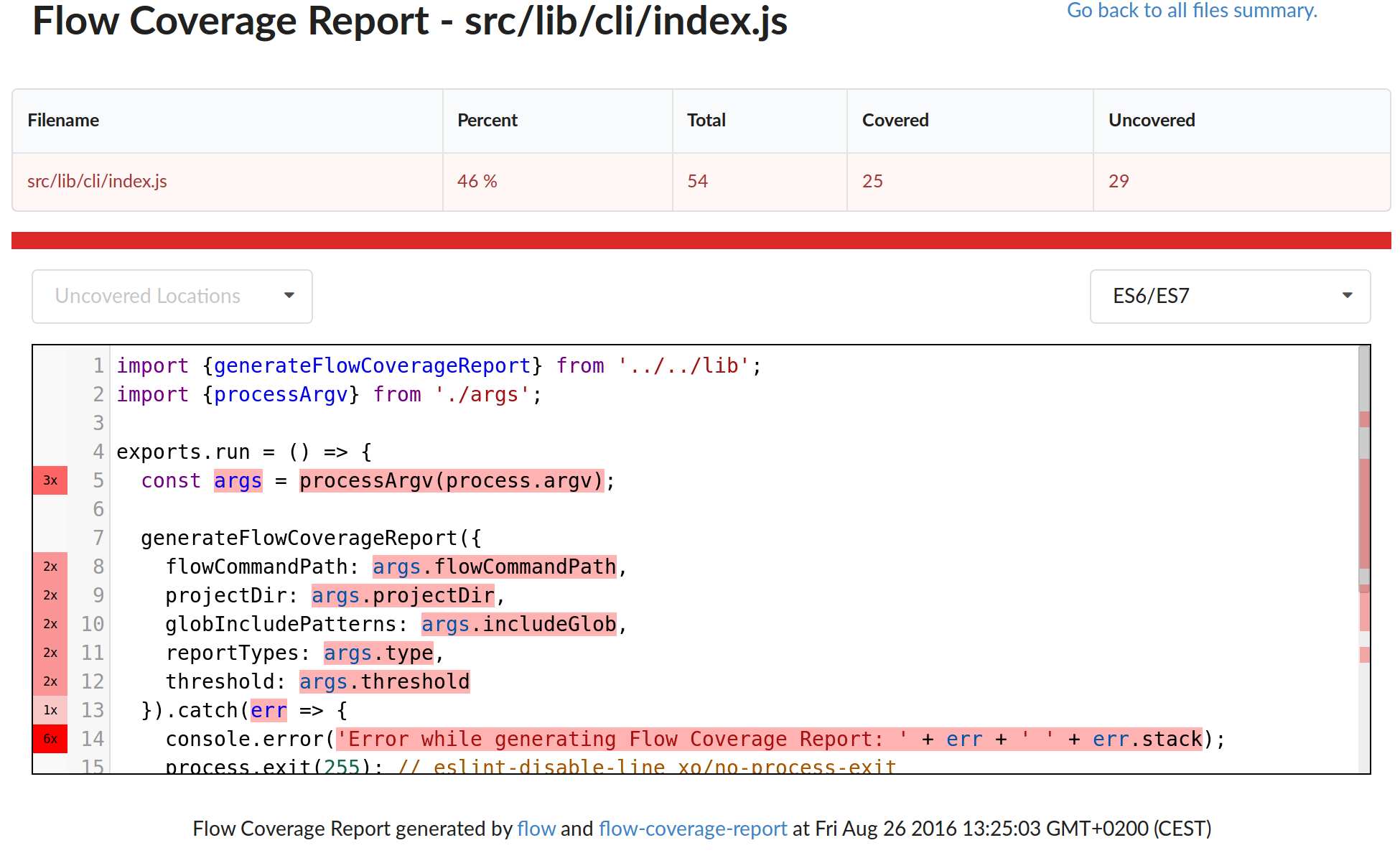flow-coverage-report is a node command line tool to help projects which are using flow types in their JavaScript code to keep track and visualize the coverage of the flow types checks.
Install the command line tool (globally or as a dev dependency of your project)
$ npm install -g flow-coverage-report
or
$ npm install --save-dev flow-coverage-report
Run the flow reporter (-i configures the include globs, -x the exclude patterns,
and -t the report types enabled):
flow-coverage-report -i 'src/**/*.js' -i 'src/**/*.jsx' -x 'src/test/**' -t html -t json -t text
If the flow executable is not in your PATH, you can specified it using the
-f option:
flow-coverage-report -f /path/to/flow ...
To customize the output dir (which defaults to flow-coverage/). you can use the -o option:
flow-coverage-report -o my-custom-flow-coverage-dir/
As a gradual typing system for JavaScript, flow will help you to statically checks parts of your JavaScript code by:
- supporting syntaxes to annotate your code with types;
- supporting syntaxes to declare, export and import new types implicitly and explicitly;
- inferencing the type of the identifier used in your code as much as possible;
Unfortunately, even with a good amount of powerful inferencing strategies, sometimes flow is not able to inference the types in some chunks of our code.
That's usually the source of a "Meh!" moment, and we blame flow for not being able to catch some issue that we thought it would catch statically.
Fortunately, flow has a coverage command which can give us a quantitative info of the flow types coverage, and optionally a color-based visualization of the parts of the source file that are not covered, for a single file.
How to generate this quantitative info and this very useful visualization of the uncoverage parts of our sources for our entire project?
You have just found it ;-)
Introduces the new command line options:
- submit more then 1 concurrent file to flow using
-c numManConcurentFilesSubmitted(defaults to 1) - load options from a specific config file using
--config filepathand disable config loading using--no-config
flow-coverage-report v0.3.0 loads the configuration automatically from the flow-coverage-report
section of the target project package.json (or from a .flow-coverage-report.json file in the
project dir), which is going to help to reduce the number of command line options that have to
be explicitly passed on the command line.
In this version, the flow-coverage-report npm package is also switching to a MIT license.
Features:
- enhancements on the HTML report template (thanks to Jason Laster)
- added optional -c/--concurrent-files option, to submit multiple files to flow
- optionally load config from package.json or json config file
Bug Fixes:
- fixed missing error exit code with text reporter
- fixed the link to GitHub in the cli help
- saved collected coverage data in temp json file to support larger project
Thanks to Ryan Albrecht, Jason Laster, Guillaume Claret and Steven Luscher for their help on this new release.
Introduces the new command line options:
- excluded file patterns using
-x "pattern" - customize the output dir using
-o reportDirPath
flow-coverage-report v0.2.0 also introduces some fixes needed to be able to generate flow coverage reports on larger projects (and projects with flow issues) and new command line options:
- fix: fixed NaN percent and React false-positive mutation warning (thanks to Ilia Saulenko)
- feat: new -o cli option to customize the output dir (thanks to Ryan Albrecht)
- fix: cleanup old dirs before a new babel build (thanks to Ryan Albrecht)
- fix: fixed issues with larger projects and projects with flow issues (thanks to Ilia Saulenko and Ryan Albrecht for the help hunting this issue down)
- feat: new -x cli option to exclude files from the coverage report
- fix: fixed report-text rendering issues on larger number of files
- feat: highlight files with errors and no coverage data in the reports
- feat: included URL to the generated HTML report in the console output (thanks to Jason Laster)
Thanks to Ilia Saulenko, Ryan Albrecht and Jason Laster for their help on this new release.
Initial prototype release:
- collect and report coverage data as json, text and html
- navigable sourcefile coverage html view based on CodeMirror
- run unit tests on travis
Thanks to Kumar McMillan and Andy MacKay for their advice and support, this project and its github repo wouldn't exist without you.



